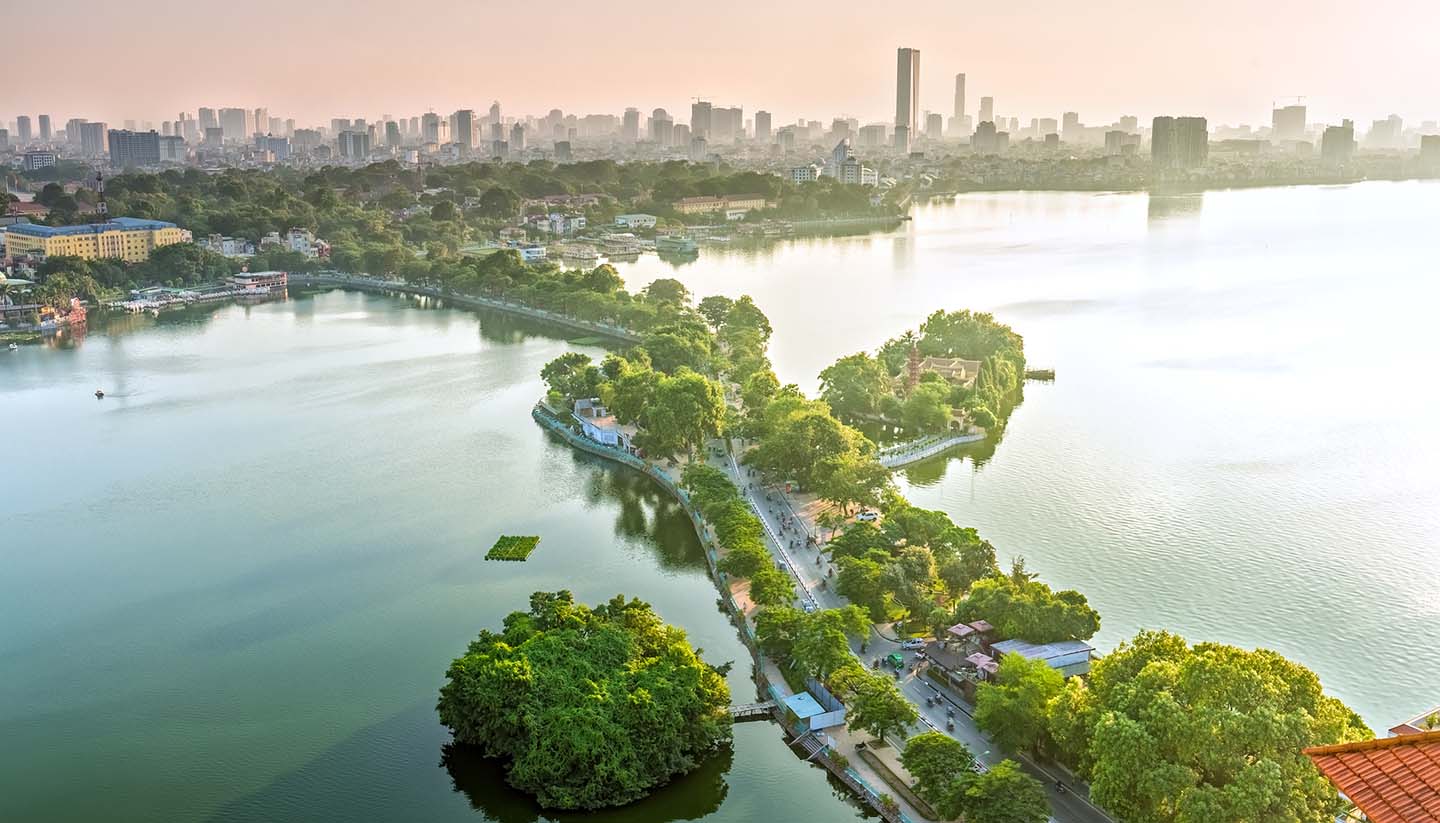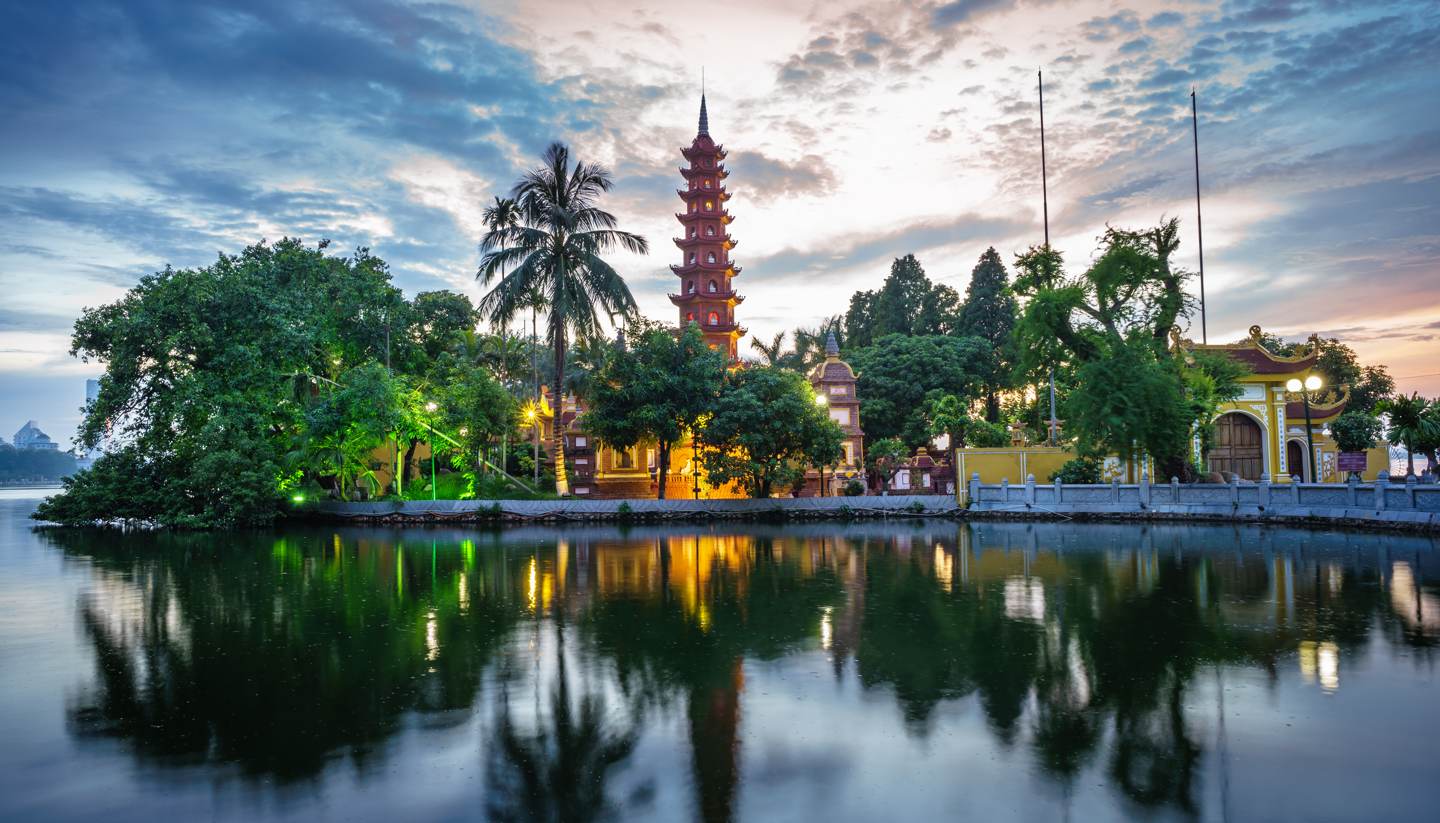Vietnam Weather, climate and geography
Weather and climate
Best time to visit
Vietnam has a diverse climate due to its long and narrow geography, with significant regional variations between the north, central, and southern parts of the country.
In the north (including Hanoi and Ha Long Bay), there are four distinct seasons. Spring (March to April) brings mild temperatures ranging from 20°C to 25°C (68°F to 77°F), while summer (May to August) is hot and humid, with temperatures reaching 30°C to 35°C (86°F to 95°F). Autumn (September to November) is cooler and drier, with temperatures around 25°C (77°F). Winter (December to February) can be surprisingly chilly, with temperatures dropping to 15°C (59°F) or lower in the mountains.
Central Vietnam (including Hue, Da Nang, and Hoi An) experiences a dry season from January to August, with temperatures between 25°C and 35°C (77°F to 95°F). The wet season runs from September to December, often bringing heavy rain and occasional typhoons. Summer months can be particularly hot, while the early months of the year are more pleasant for travel.
Southern Vietnam (including Ho Chi Minh City and the Mekong Delta) has a tropical climate with two main seasons: the dry season from December to April, with temperatures ranging from 28°C to 35°C (82°F to 95°F), and the wet season from May to November, characterised by daily showers and high humidity, but still warm temperatures around 30°C (86°F).
Overall, Vietnam can be visited year-round, but the best time to go often depends on the region you plan to explore and your preference for dry or green, lush landscapes.
Required clothing
What you pack for Vietnam will largely depend on the regions you visit and the time of year. Light, breathable clothing is ideal for most of the country, especially during the hot and humid months. Cotton or linen fabrics are recommended for comfort in the tropical climate, particularly in the south and central regions.
If you're visiting northern Vietnam during the winter months (December to February), it's wise to bring warmer layers, including a light jacket or sweater, as temperatures can drop significantly, especially in mountainous areas like Sapa. In central Vietnam, lightweight clothing is suitable for most of the year, but a rain jacket or poncho is essential during the wet season (September to December).
For the rainy season (May to November in the south, September to December in the centre), waterproof jackets, compact umbrellas, and quick-drying clothes are useful. Footwear that can handle wet conditions, such as sandals with good grip or waterproof shoes, is also recommended.
When visiting temples, pagodas, or rural communities, modest clothing is respectful—covering shoulders and knees is advised. A scarf or shawl can be handy for such occasions. Comfortable walking shoes are a must for exploring cities and natural sites alike.
Overall, packing a mix of light clothing, a few layers for cooler areas, and rain gear will ensure you are prepared for Vietnam's varied climate.
Geography
Vietnam is a country of striking contrasts, stretching over 1,600 km (994 miles) along the eastern edge of the Indochinese Peninsula. With a shape often compared to a bamboo pole with baskets at each end, its narrow waist and long coastline offer a remarkable diversity of landscapes in a relatively compact area.
Vietnam shares borders with China to the north, Laos to the northwest, and Cambodia to the southwest. To the east, it is bounded by the South China Sea (known locally as the East Sea), giving the country over 3,000 km (1,864 miles) of coastline, dotted with beaches, bays, and fishing villages.
The terrain varies dramatically—from the rugged mountains of the north, where Fansipan rises as the highest point at 3,147 metres (10,325 ft), to the fertile lowlands of the Mekong Delta in the south, which is the country's lowest area. The Red River Delta near Hanoi is another key agricultural region, while central Vietnam features narrow coastal plains backed by forested highlands.
Vietnam's natural beauty includes terraced rice fields, limestone karsts, tropical forests, and winding rivers. The diverse geography offers endless opportunities for trekking, cruising, and exploring, whether you're climbing misty peaks in Sapa or drifting along the waterways of the Mekong Delta.



